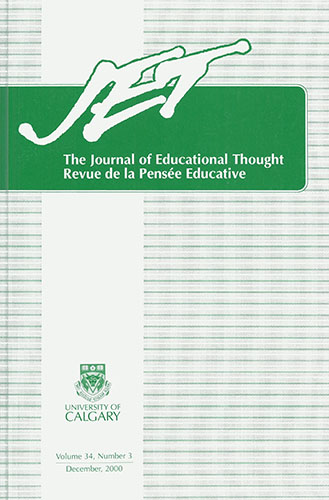The Impact of a Natural Disaster on Classroom Curricula
DOI:
https://doi.org/10.11575/jet.v34i3.52687Abstract
This study examines classroom curricula and activities in the academic year sub sequent to a flooding disaster that led to school being canceled five week s before the usual end of the academic year. Fifty- seven elementary school teachers from five schools provided information regarding alterations they ma de in their curriculum in the academic year subsequent to the flood. Curricular adjustments took the form of additional review of information from the previous academic year and integration of flood related information into classroom curricula. Curricular adjustments made by teachers were found to vary as a function of the grade taught. Teachers in the earlies t grades made more alterations in their reading, writing, and expressive language instruction as compared to teachers in the more advanced grades. Teachers in the more advanced grades made more alterations in mathematics instruction than teachers in the earliest grades. Specific ways in which teachers included information regarding the flood into their curriculum included discussion, reading stories, drawing pictures, and writing essays and books on topics which related to floods . It is important to note that these post disaster interventions were unplanned; individual classroom teachers made decisions about if and how they would make alterations in their curriculum in the wake of the disaster the previous year. School districts may find it advantage to us to develop contingency plans in the event that a disaster or another significantly disruptive event does occur. We also recommend that school districts more ca r e fully document post-disaster educational experiences of their students within and outside of the school district, in order to learn more about what types of academic interventions are helpful to students after the occurrence of disaster.
Downloads
Published
Issue
Section
License
The Journal of Educational Thought retains first publication rights for all articles. The Journal grants reproduction rights for noncommercial educational purposes with the provision that full acknowledgement of the work’s source be noted on each copy. The Journal will redirect to the appropriate authors any inquiries for further commercial publication of individual articles. All authors wishing to publish in JET will be asked to fill in and sign a Consent to Publish and Transfer of Copyright agreement.
Authors must affirm that any submission to JET has not been and will not be published or submitted elsewhere while under considration by JET.

